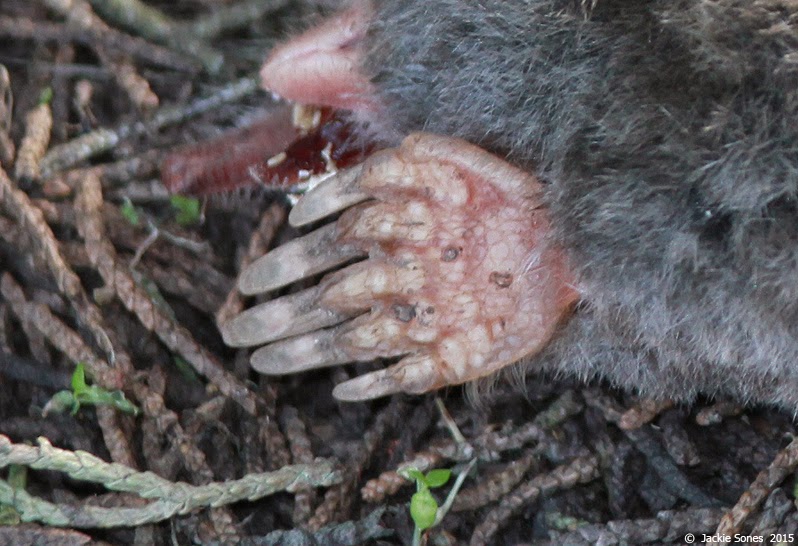Here's the mystery close-up from last night:
Did you have any guesses about what type of animal this is?
Someone noticed the sand grains in the photo. They're important. This is a burrowing animal. It also eats organic detritus stuck to the sand — that's probably why it's picking up a sand grain with a long tentacle: so it can transfer it to its mouth. The tentacles in this species are amazing: They're like little hands!
It is an echinoderm, but its only tube feet are the modified tentacles that you see in the picture above (!).
And yes, it's common name is also a vegetable.
Meet Leptosynapta albicans, the burrowing sea cucumber.
There are so many things to talk about with this species that it's hard to choose.
Their skin is fascinating — here's a zoomed in view:
Can you see all of the little anchors? There are also some small oval discs called plates. These anchors and plates are the sea cucumber's ossicles (calcareous skeletal elements). The anchors act like hooks and probably help with locomotion and traction.
Below are some amazing pictures of the anchors and plates from a closely related species taken with a scanning electron microscope:
From Stricker, S.A. 1985. The ultrastructure and formation of the calcareous ossicles in the body wall of the sea cucumber Leptosynapta clarki (Echinodermata, Holothuroida). Zoomorphology 105: 209-222.
One day when I was looking at an individual sea cucumber under a microscope, I noticed something interesting at the back end.
It's usually smooth there, but there was an unusual cluster of tiny objects. I zoomed in and saw this:
The objects had "polka dots" and what looked like long tentacles!
Do you know what's coming next?
I finally found one that was separate from the rest:
This is a juvenile Leptosynapta, only about 1 mm long. This sea cucumber broods its young internally (in the ovaries, or ovarian tubules). When the young are around ~5-6 months old, they are released.
The "polka dots" are small ossicles — the skeleton of this tiny sea cucumber.
Can you see the opaque white ring at the base of the tentacles? Here's an even better view of it:
This is a calcareous ring that surrounds the esophagus. It's made up of adjoining plates that are different shapes and sizes and arrangements, depending on the species. [Fun fact: The calcareous ring is one of the only parts of a sea cucumber that is left behind in the fossil record!]
Although you might not know it at first if you found one of these small pink blobs in the sand or under a rock, this is one cool cucumber!




















































